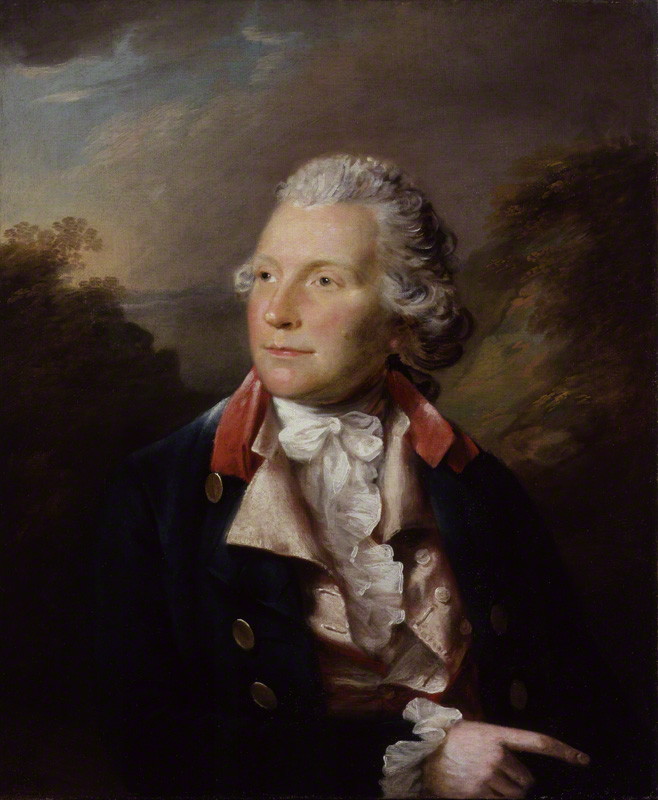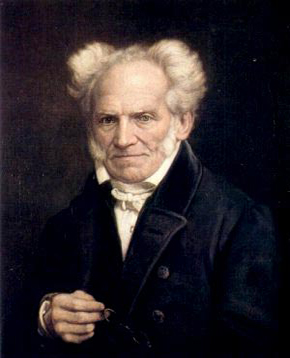|
Richard Turner (writer)
Richard Turner (1753 – 22 August 1788) was an English author. Biography Turner was born in 1753, was the second son of Richard Turner, by his wife Sarah, only sister of James Greene, barrister-at-law. He matriculated from Magdalen Hall, Oxford, on 9 February 1773. In 1778 he published "An Heretical History, collected from the original authors," London, 8vo, a compilation setting forth the origin and doctrines of the various heretical sects of the early Christian world. This was followed in 1780 by "A New and Easy Introduction to Universal Geography" (London, 12mo), issued in the form of a series of letters. The work, which was of an elementary character, reached a thirteenth edition in 1808. Encouraged by the success of this sketch, he brought out three years later "An Easy Introduction to the Arts and Sciences" (London, 1783, 12mo), which was equally popular, and, with various additions and alterations, continued a standard school textbook for some time, reaching a fourteenth ed ... [...More Info...] [...Related Items...] OR: [Wikipedia] [Google] [Baidu] |
Richard Turner (rector)
Richard Turner (1724? – 12 April 1791) was an English divine and author. Biography Turner was born in 1723 or 1724, was the son of Thomas Turner of Great Webly, Worcestershire. He matriculated from Magdalen Hall, Oxford, on 14 July 1748. He became chaplain to the Countess Dowager of Wigton, and on 11 June 1754 was instituted vicar of Elmley Castle in Worcestershire. On 19 June of the same year he was appointed rector of Little Comberton. In 1785 he received the honorary degree of LL.D. from Glasgow University. He died on 12 April 1791 and was buried at Norton-juxta-Kempsey in Worcestershire. He married Sarah, only sister of James Greene, a barrister, of Burford, Shropshire. She died in 1801. By her he had three sons—Thomas and Richard, who are separately noticed, and Edward, a general in the Indian Army The Indian Army is the land-based branch and the largest component of the Indian Armed Forces. The President of India is the Supreme Commander of the Indian Army, and ... [...More Info...] [...Related Items...] OR: [Wikipedia] [Google] [Baidu] |
Magdalen Hall
Hertford College ( ), previously known as Magdalen Hall, is a colleges of the University of Oxford, constituent college of the University of Oxford in England. It is located on Catte Street in the centre of Oxford, directly opposite the main gate to the Bodleian Library. The college is known for its iconic bridge, the Bridge of Sighs (Oxford), Bridge of Sighs. There are around 600 students at the college at any one time, comprising undergraduates, graduates and visiting students from overseas. The first foundation on the Hertford site began in the 1280s as Hart Hall and became a college in 1740 but was dissolved in 1816. In 1820, the site was taken over by Magdalen Hall, which had emerged around 1490 on a site adjacent to Magdalen College. In 1874, Magdalen Hall was incorporated as a college, reviving the name Hertford College. In 1974, Hertford was part of the first group of all-male Oxford colleges to admit women. Alumni of the college's predecessor institutions include Will ... [...More Info...] [...Related Items...] OR: [Wikipedia] [Google] [Baidu] |
University Of Oxford
The University of Oxford is a collegiate research university in Oxford, England. There is evidence of teaching as early as 1096, making it the oldest university in the English-speaking world and the world's second-oldest university in continuous operation. It grew rapidly from 1167 when Henry II banned English students from attending the University of Paris. After disputes between students and Oxford townsfolk in 1209, some academics fled north-east to Cambridge where they established what became the University of Cambridge. The two English ancient universities share many common features and are jointly referred to as ''Oxbridge''. Both are ranked among the most prestigious universities in the world. The university is made up of thirty-nine semi-autonomous constituent colleges, five permanent private halls, and a range of academic departments which are organised into four divisions. All the colleges are self-governing institutions within the university, each controlling ... [...More Info...] [...Related Items...] OR: [Wikipedia] [Google] [Baidu] |
Bath, Somerset
Bath () is a city in the Bath and North East Somerset unitary area in the ceremonial counties of England, county of Somerset, England, known for and named after its Roman Baths (Bath), Roman-built baths. At the 2021 Census, the population was 101,557. Bath is in the valley of the River Avon (Bristol), River Avon, west of London and southeast of Bristol. The city became a World Heritage Site in 1987, and was later added to the transnational World Heritage Site known as the "Great Spa Towns of Europe" in 2021. Bath is also the largest city and settlement in Somerset. The city became a spa with the Latin name ' ("the waters of Sulis") 60 AD when the Romans built Roman Baths (Bath), baths and a temple in the valley of the River Avon, although List of geothermal springs in the United Kingdom, hot springs were known even before then. Bath Abbey was founded in the 7th century and became a religious centre; the building was rebuilt in the 12th and 16th centuries. In the 17th ce ... [...More Info...] [...Related Items...] OR: [Wikipedia] [Google] [Baidu] |
Thomas Turner (potter)
Thomas Turner (1749 – February 1809) was an English potter. He was the lessee of the celebrated Salopian porcelain company, or Caughley manufactory, during the later decades of the 18th century. He is not to be confused with the potter John Turner (1737-1787) and his family, of Lane End, Staffordshire, who were active in the same period. Biography Turner was born in 1749, was the eldest son of Richard Turner (1724?–1791), vicar of Elmley Castle, Worcestershire, by his wife Sarah. Richard Turner (1753–1788) was his younger brother. It has been supposed that Thomas was brought up as a silversmith. He was, however, only formally apprenticed to his father, to qualify him for the freedom of the city of Worcester. It is probable that he was early connected with the Worcester china works. He was an excellent chemist, was a thorough master of the various processes connected with porcelain manufacture, was a skillful draughtsman, designer, and engraver, and was also a clever mus ... [...More Info...] [...Related Items...] OR: [Wikipedia] [Google] [Baidu] |
1753 Births
Events January–March * January 3 – King Binnya Dala of the Hanthawaddy Kingdom orders the burning of Ava, the former capital of the Kingdom of Burma. * January 29 – After a month's absence, Elizabeth Canning returns to her mother's home in London and claims that she was abducted; the following criminal trial causes an uproar. * February 17 – The concept of electrical telegraphy is first published in the form of a letter to ''Scots' Magazine'' from a writer who identifies himself only as "C.M.". Titled "An Expeditious Method of Conveying Intelligence", C.M. suggests that static electricity (generated by 1753 from "frictional machines") could send electric signals across wires to a receiver. Rather than the dot and dash system later used by Samuel F.B. Morse, C.M. proposes that "a set of wires equal in number to the letters of the alphabet, be extended horizontally between two given places" and that on the receiving side, "Let a ball be suspen ... [...More Info...] [...Related Items...] OR: [Wikipedia] [Google] [Baidu] |
1788 Deaths
Events January–March * January 1 – The first edition of ''The Times'', previously ''The Daily Universal Register'', is published in London. * January 2 – Georgia ratifies the United States Constitution, and becomes the fourth U.S. state under the new government. * January 9 – Connecticut ratifies the United States Constitution, and becomes the fifth U.S. state. * January 18 – The leading ship (armed tender HMS ''Supply'') in Captain Arthur Phillip's First Fleet arrives at Botany Bay, to colonise Australia. * January 22 – the Congress of the Confederation, effectively a caretaker government until the United States Constitution can be ratified by at least nine of the 13 states, elects Cyrus Griffin as its last president.''Harper's Encyclopaedia of United States History from 458 A. D. to 1909'', ed. by Benson John Lossing and, Woodrow Wilson (Harper & Brothers, 1910) p167 * January 24 – The La Perouse expedition in the ''Astrolabe'' and '' Boussole'' arrives ... [...More Info...] [...Related Items...] OR: [Wikipedia] [Google] [Baidu] |
18th-century English Writers
The 18th century lasted from January 1, 1701 ( MDCCI) to December 31, 1800 ( MDCCC). During the 18th century, elements of Enlightenment thinking culminated in the American, French, and Haitian Revolutions. During the century, slave trading and human trafficking expanded across the shores of the Atlantic, while declining in Russia, China, and Korea. Revolutions began to challenge the legitimacy of monarchical and aristocratic power structures, including the structures and beliefs that supported slavery. The Industrial Revolution began during mid-century, leading to radical changes in human society and the environment. Western historians have occasionally defined the 18th century otherwise for the purposes of their work. For example, the "short" 18th century may be defined as 1715–1789, denoting the period of time between the death of Louis XIV of France and the start of the French Revolution, with an emphasis on directly interconnected events. To historians who expand ... [...More Info...] [...Related Items...] OR: [Wikipedia] [Google] [Baidu] |
18th-century English Male Writers
The 18th century lasted from January 1, 1701 ( MDCCI) to December 31, 1800 ( MDCCC). During the 18th century, elements of Enlightenment thinking culminated in the American, French, and Haitian Revolutions. During the century, slave trading and human trafficking expanded across the shores of the Atlantic, while declining in Russia, China, and Korea. Revolutions began to challenge the legitimacy of monarchical and aristocratic power structures, including the structures and beliefs that supported slavery. The Industrial Revolution began during mid-century, leading to radical changes in human society and the environment. Western historians have occasionally defined the 18th century otherwise for the purposes of their work. For example, the "short" 18th century may be defined as 1715–1789, denoting the period of time between the death of Louis XIV of France and the start of the French Revolution, with an emphasis on directly interconnected events. To historians who expand ... [...More Info...] [...Related Items...] OR: [Wikipedia] [Google] [Baidu] |






